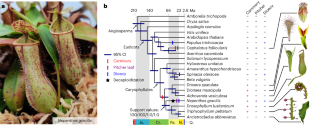2023-11-23 カロリンスカ研究所(KI)
◆研究では、ドローンが平均3分早く到着し、心臓発作疑いの場合には過半数でドローンのAEDが使用されました。約6,000人が心臓発作に見舞われるスウェーデンで、早期のAED使用が生存率向上に寄与しますが、家庭にはあまり普及していません。
◆研究は西スウェーデンで約20万人を対象に行われ、夏と冬を問わずドローンがAEDを届け、救急車到着前に使用されることが可能であることを示しました。ドローンが心臓発作の疑いのある55ケースでAEDを配達し、37ケースで救急車よりも先に到着。実際の心臓発作の18ケースでは6ケースでAEDが使用され、1例で患者が生存しました。
<関連情報>
- https://news.ki.se/drones-enabled-the-use-of-defibrillators-before-ambulance-arrival
- https://www.thelancet.com/journals/landig/article/PIIS2589-7500(23)00161-9/fulltext
実際の病院外心停止の疑いにおける自動体外式除細動器のドローン配送と救急車到着の比較:スウェーデンにおける前向き観察研究 Drone delivery of automated external defibrillators compared with ambulance arrival in real-life suspected out-of-hospital cardiac arrests: a prospective observational study in Sweden
Sofia Schierbeck,Anette Nord, Leif Svensson,Mattias Ringh,Per Nordberg,Jacob Hollenberg,Peter Lundgren,Fredrik Folke,Martin Jonsson,Sune Forsberg,Andreas Claesson
The Lancet Digital Health Published:December, 2023
DOI:https://doi.org/10.1016/S2589-7500(23)00161-9

Summary
Background
A novel approach to improve bystander defibrillation for out-of-hospital cardiac arrests is to dispatch and deliver an automated external defibrillator (AED) directly to the suspected cardiac arrest location by drone. The aim of this study was to investigate how often a drone could deliver an AED before ambulance arrival and to measure the median time benefit achieved by drone deliveries.
Methods
In this prospective observational study, five AED-equipped drones were placed within two separate controlled airspaces in Sweden, covering approximately 200 000 inhabitants. Drones were dispatched in addition to standard emergency medical services for suspected out-of-hospital cardiac arrests and flight was autonomous. Alerts concerning children younger than 8 years, trauma, and emergency medical services-witnessed cases were not included. Exclusion criteria were air traffic control non-approval of flight, unfavourable weather conditions, no-delivery zones, and darkness. Data were collected from the dispatch centres, ambulance organisations, Swedish Registry for Cardiopulmonary Resuscitation, and the drone operator. Core outcomes were the percentage of cases for which an AED was delivered by a drone before ambulance arrival, and the median time difference (minutes and seconds) between AED delivery by drone and ambulance arrival. Explorative outcomes were percentage of attached drone-delivered AEDs before ambulance arrival and the percentage of cases defibrillated by a drone-delivered AED when it was used before ambulance arrival.
Findings
During the study period (from April 21, 2021 to May 31, 2022), 211 suspected out-of-hospital cardiac arrest alerts occurred, and in 72 (34%) of those a drone was deployed. Among those, an AED was successfully delivered in 58 (81%) cases, and the major reason for non-delivery was cancellation by dispatch centre because the case was not an out-of-hospital cardiac arrest. In cases for which arrival times for both drone and ambulance were available (n=55), AED delivery by drone occurred before ambulance arrival in 37 cases (67%), with a median time benefit of 3 min and 14 s. Among these cases, 18 (49%) were true out-of-hospital cardiac arrests and a drone-delivered AED was attached in six cases (33%). Two (33%) had a shockable first rhythm and were defibrillated by a drone-delivered AED before ambulance arrival, with one person achieving 30-day survival. No adverse events occurred. AED delivery (not landing) was made within 15 m from the patient or building in 91% of the cases.
Interpretation
AED-equipped drones dispatched in cases of suspected out-of-hospital cardiac arrests delivered AEDs before ambulance arrival in two thirds of cases, with a clinically relevant median time benefit of more than 3 min. This intervention could potentially decrease time to attachment of an AED, before ambulance arrival.
Funding
Swedish Heart Lung Foundation.


